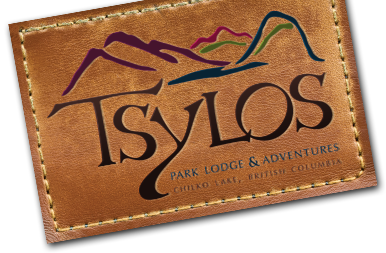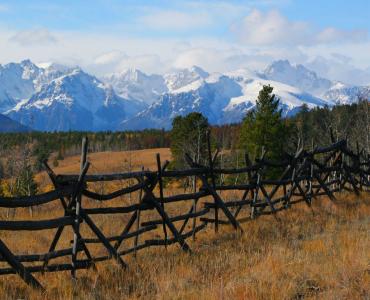There’s no doubt that fly fishing is one of the most addictive sports on earth. If you’re just starting your journey on what to purchase it can be overwhelming. The world of fly fishing gear and equipment for beginners can seem daunting, but with a little guidance you will find that outfitting yourself with equipment can be a seamless and enjoyable process. Who doesn’t like to go shopping for their favorite fly fishing gear.

By the end of this article, you’re going to have a clear understanding of the different components of your fly fishing gear, what are they, what is their purpose, and some do’s and don’ts when it comes to putting together a fly-fishing setup for beginners. Equipment isn’t everything but the right gear can make your fly-fishing trip that much more enjoyable. The wrong gear can be frustrating. Fly fishing has plenty of variables, but equipment is one of the few that we can control.
Getting set up with your fly fishing gear can be broken down into 7 key components: Rod, reel, backing, fly line, leader, tippet and fly rod case. Each of these will be broken down in detail below to give you a clear understanding of what they are and their purpose.
Fly Rods
Rods come in all lengths and weights, from as short as 7 feet to as long as 16 feet. For simplicity purposes, we’re going to talk about rods in the 9 to 10 foot range. We will also cover how to determine what rod is going to be the correct “weight” and the correct “action”.
Rod Length – A rod between 9 and 10 feet in length is going to be the most versatile regardless of where you’re fly fishing or what you’re fishing for in freshwater. A rod much shorter than 9 feet may be more suitable for fishing small spring creeks, but anytime you venture into larger streams, river mouths, lakes, and ponds you will quickly feel as though you are under-gunned. Rods longer than 10 feet will also find you struggling on the other end of the spectrum. If there was one “golden standard” rod to include in a fly-fishing setup for beginners, it would be 9 feet long and either a 5 or a 6-weight.
Rod Weight – The weight of the rod, which refers to the width of the rod can be anywhere from a 000 to 16. It is used to properly pair the rod with the correct fly line. The smaller the number, the thinner, lighter, and more flexible the rod is going to be. Rod builders generally make a rod to match a specific species or style. A universal rod weight for trout fly fishing in freshwater would be either a 5 or 6 weight.
Rod Action – The “action” of the fly rod is the way the rod flexes. Every rod has a “kick point” or “flex point” built into the graphite, and a great rule of thumb is that the closer the flex point is to the tip of the rod, the faster the action. A faster action rod results in a more powerful cast but requires great timing, which beginners find difficult when first starting out. Alternatively, rods that bend closer toward the handle would be considered slower action rods. Slow action rods provide a less powerful cast but more forgiving to beginners. A moderate action is the middle of the road. It is more forgiving to beginners then fast action and can cast farther then slow action rods. While they all have their time and place, a moderate action rod is going to prove most useful in a fly-fishing setup for beginners.
Cases – Which ever rod your purchase it usually comes with sock and rod tube. The sock has individual slots for the different rod sections then is placed into the tube. This adds extra cushioning inside the rod tube. Rod tubes are rigid tubes made from aluminum or carbon fibre. They are designed to protect the rod in transportation to your fishing destination. For a 9 foot rod the comes in four pieces the tube is generally 30 inches long with a two inches in diameter
Fly Lines

Notice that we’ve decided to cover lines before reels. Often time when putting together a fly-fishing setup, anglers are eager to drop a majority of their budget on both the rod and the reel while overlooking the fly line. This can be a costly mistake.
Whichever line you go with, be certain that you’ve matched the “weight” on your fly line to the “weight” on the fly rod. For example, a 6-weight rod should always be loaded with a 6-weight line. Anything lighter and the rod will not load properly, and a heavier line will make the rod feel “droopy”
What are The Four Parts of the Fly Line?
- Backing – a sturdy heavier line wrapped around the reel and connects the fly line to the reel.
- Fly Line -Floating line that floats on the surface of the water, or a wet line that sinks below the surface.
- Leader – A tapered, knotless, and nearly invisible transition from fly line to tippet. It can be made of a variety of materials, sizes, and color.
- Tippet -A lighter weight material that attaches to the thin part of the leader then to your fly. It easily is replaced as needed.
Backing – If we were to fill the entire reel with fly line alone, it would be costing anglers a small fortune. Therefore, before the fly line is attached, the reel will be loaded with a nylon or dacron material called “backing”. The backing is usually 20 or 30lb breaking strength and is very inexpensive. It is used to add bulk to the spool and then attached to the fly line with either a loop system or a nail knot.
Fly Line – The first choice you’re going to be faced with when choosing a fly line will be the “taper” of the line. While there are a few different tapers available on the marketplace, the predominant is a WF (Weight Forward), and in a fly-fishing setup for beginners it is the only one you should pay attention to. Weight forward lines are easier to cast, easier to deliver the fly, better in the wind, and will ultimately make your fly-fishing experience that much better.
Floating, Sink Tip, Full Sink fly lines. – You will also have a choice between floating, intermediate sink, sink-tip, full-sinking line and a few others. When you’re starting out, look no further than a WF (weight forward) floating fly line. A floating line doesn’t restrict you only to floating flies as they are a popular choice for fishing nymphs, streamers and emergers, but they are hands down the easiest to cast and the most versatile.
Leaders and Tippet – Lastly, the leader is the last piece of the proverbial puzzle when it comes to your fly line. Because you cannot tie your fly directly onto the fly line, you’re going to need something in between the line and the fly itself that is far less visible to the fish.
Today’s leaders are built with a tapered design, thicker in the butt end and tapering down to their thinnest part approximately 24 inches from where the fly is attached. This helps with turning the fly over and getting it to land properly, as a long piece of thin tippet material can be cause for frustration.
Though it can be confusing, a “gold standard” leader when it comes to fly fishing in freshwater is often a tapered leader between 9 and 12 feet in length and between 5- and 8-pounds breaking strength.
The “tippet” section is a level piece of either monofilament or fluorocarbon material that, unlike a tapered leader, is one diameter the whole way through. Using either a blood knot or a double surgeon’s knot, the tippet is added onto the tapered leader to increase either the length, longevity of the leader, or both.
Fly Fishing Reels

Reel technology is easy to become overwhelmed by. Disc drags that are powerful enough to stop a moving vehicle, sealed housings that protect the reel from the harshest of elements, these are amazing technological advancements but not what we need to worry about with a fly fishing setup for beginners.
What you need to know about your reel is that it is, like the fly line, “matched up” with the rod you’re fishing. Most manufacturers will either stamp the reel with the corresponding rod weight that it is designed to be fished on, or they will have a chart that outlines which weight rod each reel is designed for.
Whatever you choose, ensuring that you have sufficient room for at least 70 yards of “backing” (thin nylon line designed to add bulk to the spool, underneath the fly line itself) as well as the fly line itself is critical.
All in One Fly Fishing Kits.

In closing
Putting together a fly-fishing setup for beginners can be daunting, but if you’re just starting out make sure to seek advice from your local fly shop. Not only will they carry everything you need to get started, but they will also ensure you’re not purchasing unnecessary equipment for your skill level or what waters you spend your time fishing.
Visit Us in Chilko Lake, BC at Tsylos Park Lodge!
Speaking of time on the water, if you’re looking to book the fly fishing trip of a lifetime to Tsylos Park Lodge and the Chilko River, click here to check availability.
-Tsylos Park Lodge



